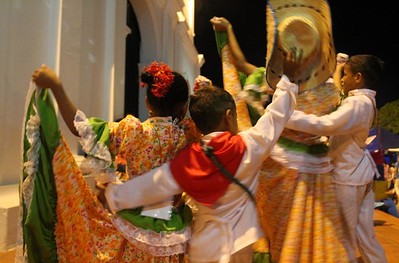Story of Cumbia: Roots and Origins

The story of Cumbia begins in the rich cultural landscape of colonial Colombia, a genre that has become synonymous with vibrant cumbia dance and spirited cumbias para bailar. Dive into the historical tapestry that wove together African, Indigenous, and European influences to create what is known today as cumbia music.
African Cumbia Influences
The African influence on Cumbia is profound, brought by African slaves to Colombian shores. Instruments like the alemán and llamador drums provided the deep, resonant beats that are the heartbeat of cumbia songs. This influence is evident in the energetic beats of cumbias sonideras and the pulsating rhythms in cumbias mix, compelling people to engage in dancing cumbia.
Indigenous Colombian Contributions
The indigenous people of Colombia infused Cumbia with unique melodies and harmonies. The gaita, a traditional indigenous flute, is a distinctive element in cumbia colombiana. Its haunting sound complements the African drums, creating a fusion that is integral to cumbia music, crucial for those learning how to dance cumbia.
Spanish and European Impact
Spanish colonization brought with it European musical elements, introducing string instruments and varied musical scales. This influence is particularly noticeable in cumbia sonidera and norteñas cumbias, where the harmonic structure reflects a more European style. Songs like “Baila Esta Cumbia” by Selena, and the works of artists like Margarita la Diosa de la Cumbia, showcase this fusion.
Cumbia in Colonial Colombia
In colonial Colombia, Cumbia was more than just music; it was a social and cultural phenomenon. It began as a courtship dance, evolving into a form of expression for the lower classes. The dance’s inclusive nature, inviting everyone to partake, is captured in events like cumbias en vivo y algo más and cumbia club gatherings.
Cultural Identity and Resistance
Cumbia became a symbol of cultural identity, especially among Afro-Colombian communities. It was a form of resistance, a way to preserve African heritage in a new world. The dance evolved into a tool for cultural preservation.
The Cumbia Spread Across Colombia
As Cumbia spread across Colombia, it took on regional variations. The cumbia sampuesana from the coast and the cumbia antioqueña from the interior regions are examples of this diversity. Each region added its flair to the cumbia songs, creating a rich tapestry of sounds and styles.
The Spread Beyond Colombia
Cumbia’s journey beyond Colombia saw it becoming a staple in other Latin American cultures. In Mexico, cumbia mexicana and cumbias norteñas emerged, blending local musical styles with traditional Cumbian elements. Musica cumbia became a pan-Latin American phenomenon, with radio stations like cumbias inmortales radio spreading its popularity.
Traditional Cumbia
Early Cumbia musicians and dancers played a crucial role in its development. Their contributions laid the groundwork for contemporary artists and styles, influencing how cumbia is performed and enjoyed today, from bailando cumbia at festivals to dancing to cumbia in clubs.
Cumbia’s early days set the stage for its enduring legacy. Understanding its origins helps appreciate the depth and breadth of this genre, from traditional cumbias colombianas to modern cumbia sonidera. The evolution of Cumbia is a testament to the resilience and adaptability of this vibrant musical form.
Photo credit: Universidad EAFIT @ Flickr